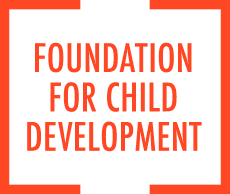https://www.fcd-us.org/the-school-readiness-and-academic-achievement-in-reading-and-mathematics-of-young-hispanic-children-in-the-united-states/
This policy brief from the National Task Force on Early Childhood Education for Hispanics presents data on the reading and math readiness of Hispanic children at the start of kindergarten and their achievement at the end of fifth grade.
The brief is based primarily on two commissioned reports to the Task Force by Dr. Sean F. Reardon of Stanford University and Dr. Claudia Galindo of Johns Hopkins University that describe findings from analyses they conducted of data from the federal government’s Early Childhood Longitudinal Study, Kindergarten Cohort 1998-1999 (ECLS-K).
Encouragingly, the data from that national sample of young children show that Hispanics gain some ground relative to Whites in reading and math in the primary grades. However, they still lag well behind Whites at the end of fifth grade, especially at the most complex reading and math skill levels.
In reading, only 70% of the Hispanic children in the ECLS-K were orally proficient enough in English to be given the initial English reading assessment as they started kindergarten. Although this group of Hispanic youngsters had substantially lower English reading readiness than Whites as they began kindergarten, their reading gaps with Whites had closed considerably by the end of the fifth grade. The largest gaps at the end of the fifth grade were in the most advanced reading comprehension and interpretation skill areas. Most of the reading catch-up for these Hispanic children occurred between the start of kindergarten and the end of first grade. Moreover, the Hispanics who gained ground were mainly those with lower levels of (assessed) English reading readiness at the start of kindergarten, including many who were from non-English speaking homes.
The reading story was less encouraging for the 30% of Hispanic children who did not speak English well enough when they started kindergarten to be given the English reading assessment. By the end of fifth grade, these English language learners not only lagged far behind Whites in reading, they also were well behind the 70% Hispanics who were given the English reading assessment at the start of kindergarten.
The policy brief notes that the ECLS-K data also show that reading and math achievement varies considerably among Hispanics from different national origin groups and by generational status. For example, Hispanics of Cuban, South American and Puerto Rican origin tend to perform at similar levels as Whites in reading and math, while Mexican Americans and Central Americans achieve at lower levels than Whites. Among Mexican Americans, third generation children perform at higher levels than first and second generation youngsters.
The differences in reading and math achievement documented in the studies by Dr. Reardon and Dr. Galindo were strongly related to socioeconomic differences. For example, 36% of Hispanic children were from the lowest socioeconomic status (SES) segment while only 8% of Whites were from this segment. On the other hand, 30% of Whites were in the highest SES group while only 9% of Hispanics were. The 30% of Hispanic children who were not given the English reading assessment at the start of kindergarten were mostly from low SES circumstances. In terms of national origin, the average SES level of children from South American heritage was much higher than the average SES level of children from Central American heritage. Similarly, the average SES level of third generation Mexican Americans was higher than those from first and second generations.
Parent education differences are a major component of the overall SES differences. Among Hispanic children in the lowest SES segment, nearly 64% had parents who had not completed high school and less than one percent had a parent with a college degree. On the other hand, of the Hispanic children in the highest SES segment, 87% had parents who had completed college and only 3% had parents who had not completed high school.
Despite the relationship between SES and achievement, some within-class achievement differences between Whites and Hispanics were found as well. For example, White children had somewhat higher reading readiness scores than Hispanic children within each of the five SES levels used in the analyses. However, by the end of fifth grade, these within-class gaps diminished considerably.
In conclusion, the generally low reading and math readiness and achievement patterns of the large segment of Hispanic youngsters from low SES circumstances support the conclusion that it is essential to expand and improve early childhood education for these youngsters. This is especially important for the many low SES Hispanic children who are English language learners, as they are doing even less well than low SES Hispanic youngsters who speak at least some English when they start school. Finally, the within-class readiness and achievement differences with Whites are evidence that early childhood education expansion and improvement efforts for Hispanics should be designed to serve Hispanic children from all SES levels.
